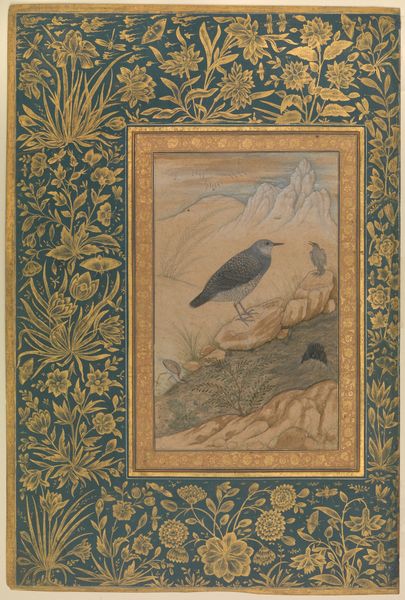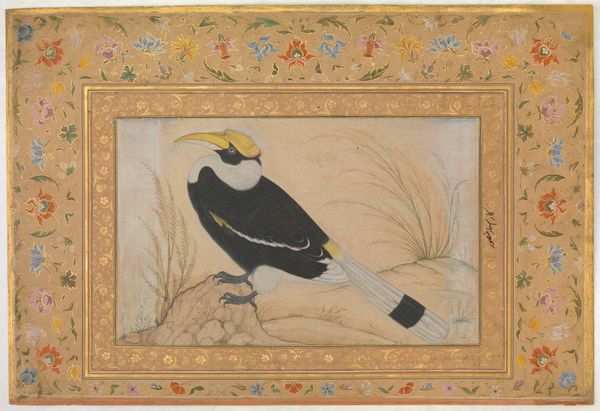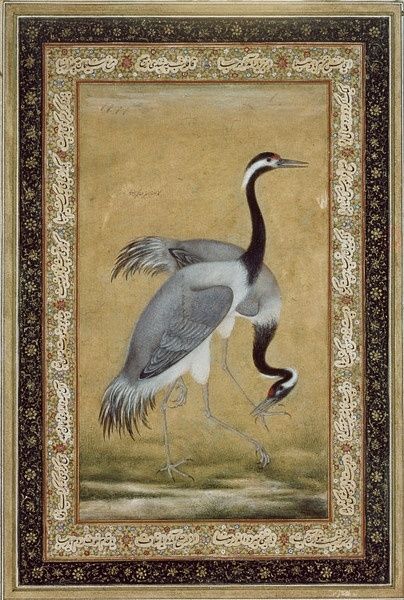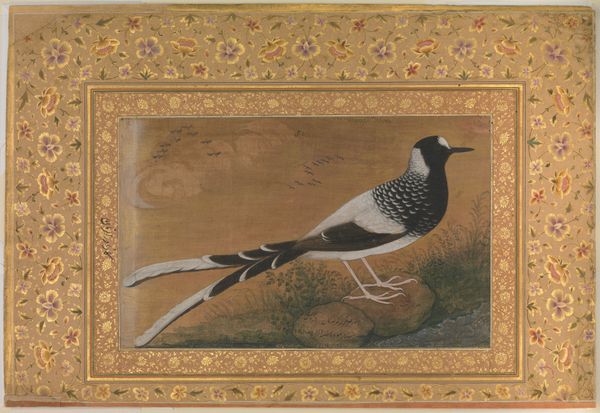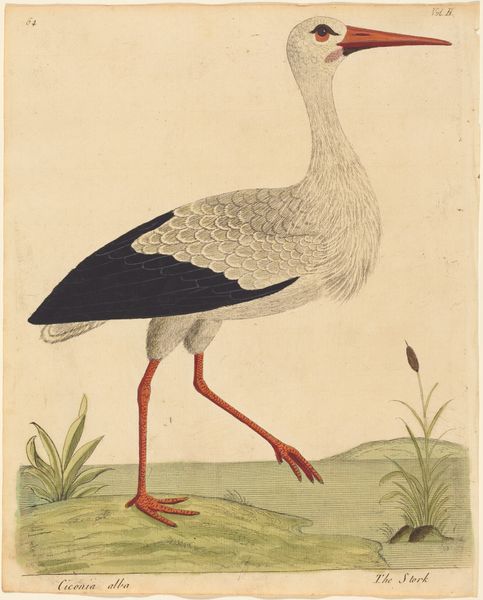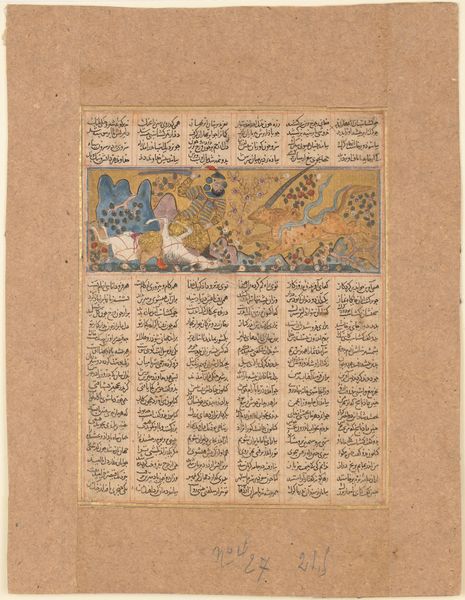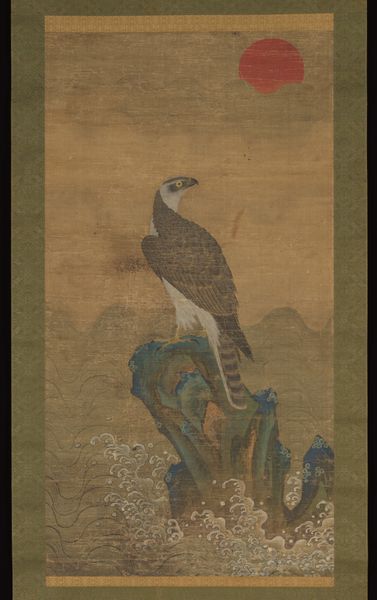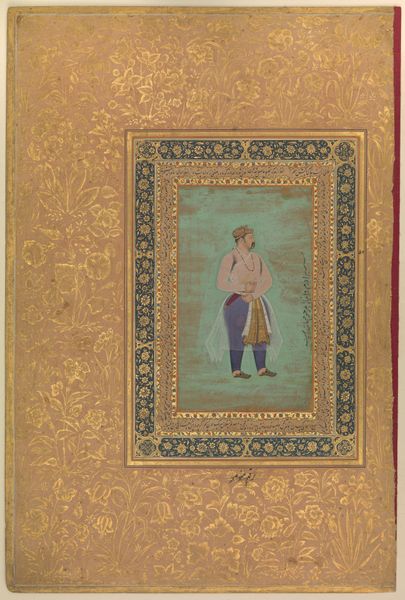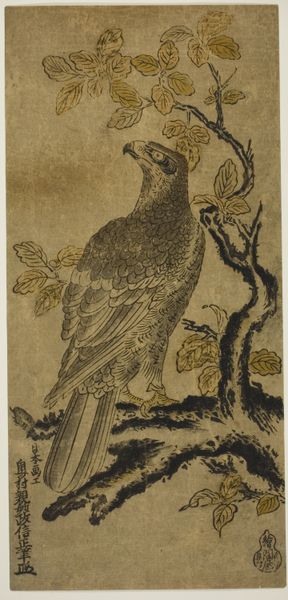
"Red-Headed Vulture and Long-Billed Vulture", Folio from the Shah Jahan Album 1510 - 1645
0:00
0:00
painting, watercolor
#
portrait
#
water colours
#
animal
#
painting
#
bird
#
watercolor
#
islamic-art
Dimensions: H. 15 3/8 in. (39.1 cm) W. 10 1/16 in. (25.6 cm)
Copyright: Public Domain
Editor: We’re looking at "Red-Headed Vulture and Long-Billed Vulture," a watercolor painting by Mansur from the Shah Jahan Album, sometime between 1610 and 1645. The detail is striking; the birds look almost regal despite their typical association with death. How do you read this piece? Curator: Well, beyond the scientific precision of rendering these birds, consider the cultural context. In many traditions, birds are seen as messengers between worlds. What might it mean to portray these particular birds—vultures—with such care, almost endowing them with noble qualities? Are they merely specimens, or do they carry symbolic weight related to transformation or even purification? Editor: Transformation…that's interesting. I was focused on their sort of... clinical depiction. The red-headed vulture especially seems almost menacing, with its dark plumage and bright head. Is there significance in the choice of vultures specifically? Curator: Absolutely. Think about what vultures *do*. They cleanse. In some cultures, this act connects them to spiritual cleansing and renewal. Red, symbolically, can mean many things—passion, sacrifice, lifeblood. But ask yourself, is the blood here a sign of life given *back* to the earth through natural decay, rather than violently taken? Mansur may be suggesting that life and death are more interconnected than we usually acknowledge. Editor: I never considered the vultures’ role in the ecosystem. So it’s not necessarily a morbid painting; it could be a celebration of nature's cycles? Curator: Precisely. And Mansur, by portraying these birds in such detail, invites us to reconsider our own perceptions. He challenges the traditional, negative associations with these creatures and offers a more nuanced understanding. Editor: I see it now. Thanks! I went from seeing a morbid depiction to appreciating this complex commentary about life, death, and nature.
Comments
No comments
Be the first to comment and join the conversation on the ultimate creative platform.
